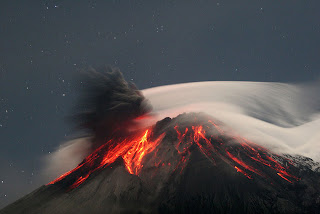

Liza Blakewell, in her essay, comments on the importance of image acts. An image act is the linking of a outcome or activity in response to a certain image. Blakewell writes, "For advertisers and their clients images are powerful tools, capable of persuading you to buy something, go somewhere, and be someone (else)"(25). There is truth to Blakewell's observations. Images are powerful. They can inspire, intimidate, or even raise a revolution. Blakewell claims that images are just as important to the evolution of language as written language. And I agree with her. Blakewell writes, "...the pounding of a shoe on a tabletop at a public meeting may sometimes be the only way to capture the world's attention, a certain face the only way to launch a thousand ships, a picture the only way to say something with fewer than a thousand words"(29). These are astute observations with their own merits. Perhaps the greatest part of the essay is Blakewell's embrace of not just image acts, but speech acts as well. There is a unification of the two, "These two systems of communication, as different as they are in practice, as separate and apart they often seem, are, in fact, in cahoots"(30).
The image I would first like to examine is the famous HOPE Barack Obama poster. This image can be used as an image act. It attempts to inspire the public to vote for a certain candidate. The union of the speech act, "HOPE," and the image act, Barack Obama's photo is inspring. This image inspires change, or attempts to. I would consider it an image act.
The second is an image taken during the Vietnam War. This photo is famous for inspiring more negative feedback from the public towards the Vietname War. It can be considered and image act cause it inspired a certain feeling of distrust and negativity between the United States government and its citizens.
Image acts inspire, and hold power. They are meant to inspire a reaction. I believe these images are powerful and just as important as speech acts.









